There are an estimated 3 million shipwrecks around the world on the ocean floor. They are a reminder that nothing lasts forever; most of these ships are now home to sea creatures instead of the humans that used to stroll their decks.
They are a fleeting window into our past, reminding us of when these ships used to sail our rivers, seas, and oceans proudly.
9.Truk Lagoon is home to 60 shipwrecks in the Caroline Islands in the Central Pacific
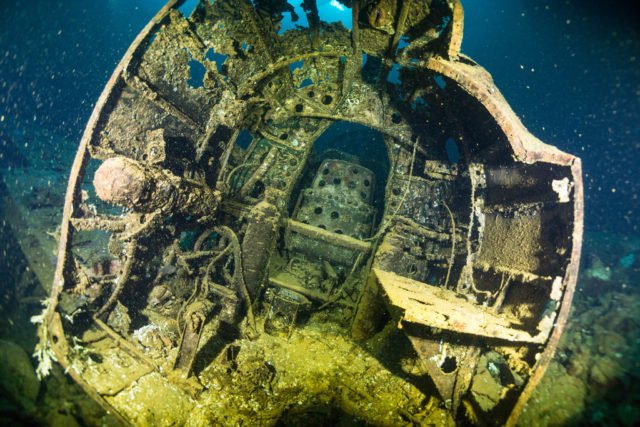
This is a scuba diving paradise for anyone who likes to swim around and through shipwrecks. The ships are virtually intact here in the bottom of the lagoon, and they are often referred to as the “Ghost Fleet of Truk Lagoon”. The shipwrecks sit in crystal clear water only 15 meters deep. Divers can swim across decks still strewn with gas masks and depth charges, and if you swim below decks, there are human remains. In the ships’ holds are motorcycles, bulldozers, bombs, weapons, fighter aircraft, and tanks. One vessel of special interest here is the wreck of the submarine I-169 Shinohara which had participated in the attack on Pearl Harbor in 1941. The wrecks are crusted with coral and have attracted a diverse range of marine life such as sharks, manta rays, and turtles. There are many tours that can be taken to explore the wrecks.
8.The Yongala off of the coast of Queensland, Australia is full of sea life
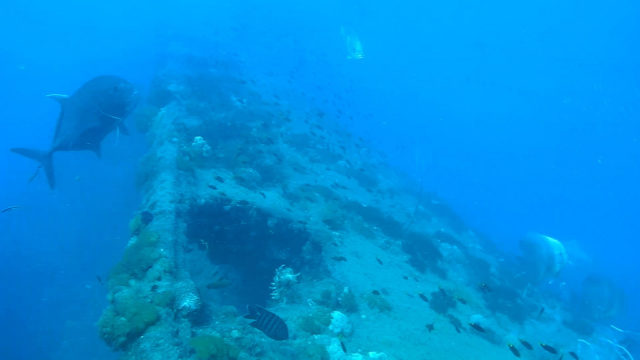
This is one of the best dive wrecks in the world, and it sits on the rich ocean floor off the coast of Queensland, Australia. It sank in 1911. 122 people died on it, as well as a bull and a racehorse by the name of Moonshine.
Because the ship carried no telegraph, it had no warning that it was heading into a cyclone. The ship is 109 meters long, and divers are not allowed inside, but the outside of it is surrounded by stunning corals, several species of shark, and many beautiful fish.
7.USAT Liberty lies on a stunning black sand slope near Bali in Indonesia
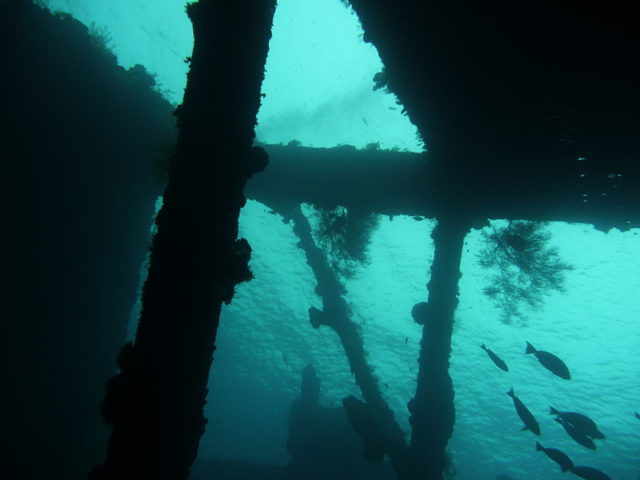
Almost lying parallel to the beach on beautiful black sand is the USAT Liberty. She was torpedoed by a Japanese submarine. The wreck is 120 meters long and lies only 30 meters offshore. Being so close to shore, her depth is dependent on the tides; she can be in the water as shallow as 9 meters all the way to a high tide of 30 meters. The vessel is broken up; you can’t swim inside, but its outside is mantled in colored anemones, corals, and gorgonians.
6.Block ship Tabarka was sunk to prevent enemy access to Scapa Flow Bay
Back in both world wars, ships were sunk deliberately to prevent access to Scapa Flow Bay in Orkney, Scotland by enemy ships. This ship was one of the last ones to be scuttled for this purpose.
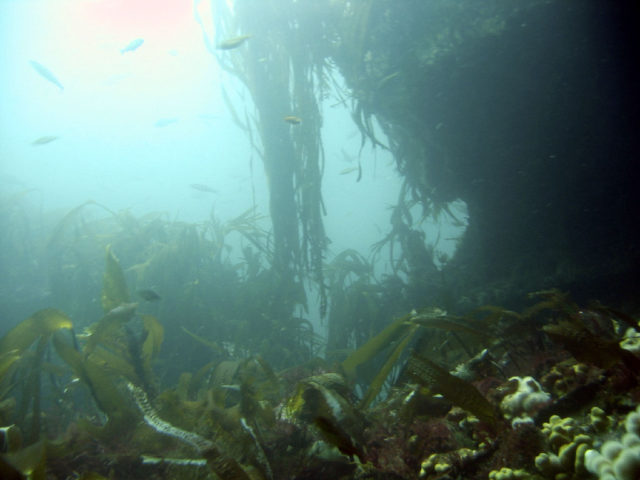
She now lies upside down and has many access points for a diver to enter. It is often described as a cathedral as she is now teaming with life in the clear waters.
5.Mo’ynoq, Uzbekistan sports a landlocked cluster of shipwrecks
Once this was a fishing community and Uzbekistan’s only port, with thousands of residents.
Now it is home to rusting shipwrecks that used to make up its fishing fleet.
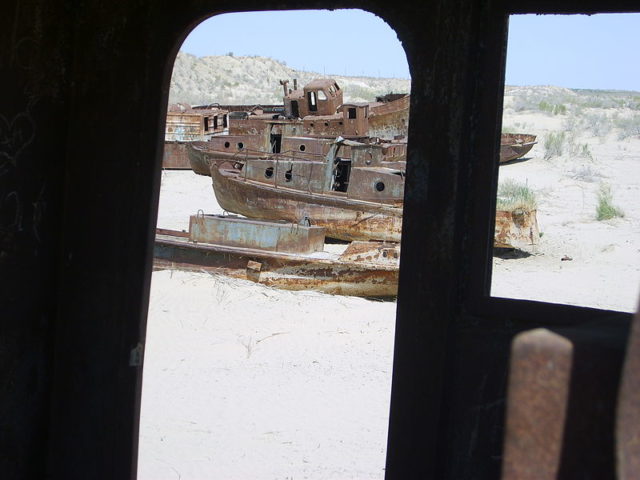
The Aral Sea started to dry up and so killed the fishing industry in this town. This is one of the few places where the shipwrecks now sit on land.
4.At Vanuatu, the large luxury liner President Coolidge is so big it takes many dives to see it all

Once upon a time, the President Coolidge was a luxury liner, and then it was a troop carrier in the war. She sank after hitting mines. The wreck rests on its side in water that ranges from 17 to 70 meters deep.
She is now classed as a Marine Reserve and can be explored by diving. This is such a huge wreck that to see the entire ship requires several visits.
3.The Thistlegorm sank in the Egyptian Red Sea in 1941 while carrying a full cargo
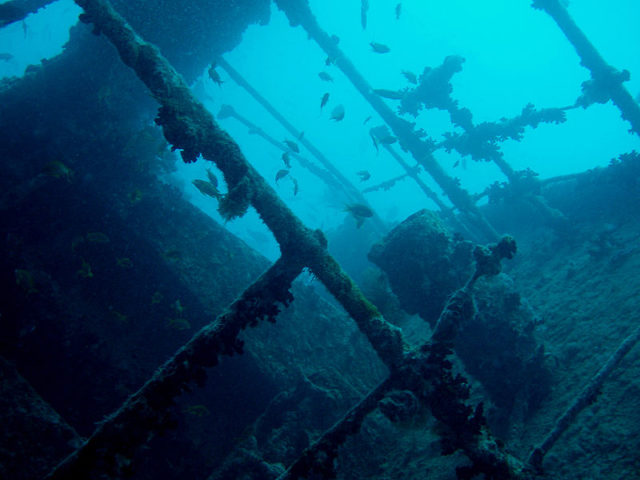
A big wreck at 131 meters long, this British war vessel was carrying a full cargo of war supplies when she was bombed from the air. She now sits in the Strait of Gobal, north of Ras Mohammed.
The currents can be strong here, and they flow in different directions at the surface and along the wreck. On this wreck, you can clearly see the cargo it had been carrying – trucks, tanks, motorbikes, and armament.
2.Former Chinese trading vessel now a diving paradise in Honolulu, Hawaii
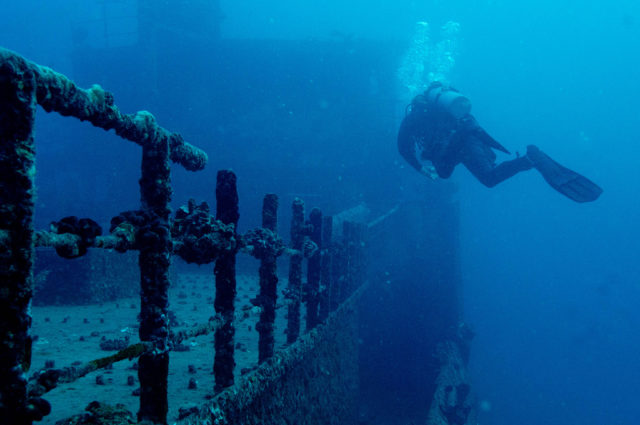
The Sea Tiger was a trading vessel used for carrying illegal immigrants into Hawaii in the 1990s. It was purchased solely to be used as a dive-enrichment effort and was sunk in 1999 after alterations were made on the vessel.
It is 150 feet long and sits in 110 feet of water. You can swim through the bridge and hold; other than some minor decay, the ship is in very good condition and is home to a teeming world of sea life.
1.A victim of Hurricane Frances in 2004, the La Famille Express sits shipwrecked on a barrier reef in the Turks and Caicos Islands
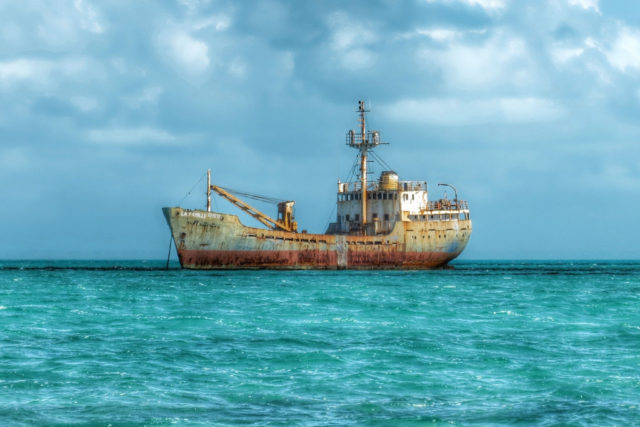
The freighter La Famille Express broke its mooring in 2004 in a hurricane and drifted out into the Caribbean Sea, becoming jammed on a barrier reef in only 7 feet of water. It sits out in the ocean as a stunning, if rusty, landmark, and is often photographed.
Here is another story from us: The Black Sea’s 40+ shipwrecks discovered during survey of her seabed
It is only one of many shipwrecks that litter the seabed around the Turks and Caicos Islands. Both the weather and the reef walls have snared as many as 1,000 ships over the centuries in these warm waters, Twisted Sifter reported.
